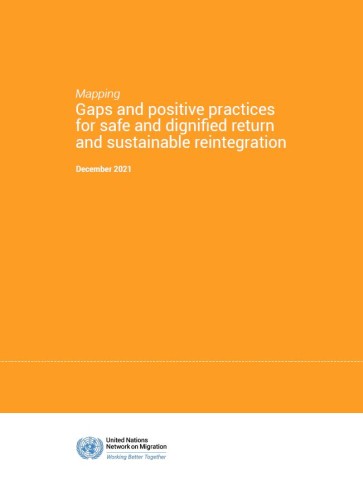Library
Mapping: Gaps and Positive Practices for Safe and Dignified Return and Sustainable Reintegration
At a glance
This mapping provides a useful tool for raising awareness on different approaches and aims to contribute to a common understanding on how to best integrate people-centred, sustainable, human rights-based, gender-responsive, child-sensitive, whole-of-government and whole-of society approaches into future design, implementation and evaluation of return, readmission and reintegration practices.
What it offers
The mapping identifies several challenges, including related to the impact of COVID-19, and positive practices from a number of States representing a diversity of geographic regions, migration contexts, government ministries, UN entities, as well as civil society and other stakeholders. It is providing a snapshot of key challenges and opportunities, while pointing readers to additional resources. The mapping does so by:
- Capturing the key challenges faced by migrants, Member States, civil society and other stakeholders with regard to return and reintegration, and
- Identifying a range of positive practices to facilitate better GCM implementation and learning in the future.
Further information
This paper was drafted by Return and Reintegration Working Group Co-leads (IOM, OHCHR, UNICEF), reviewed by Return and Reintegration Working Group Members (FAO, ILO, UN-Habitat, UNDP, UNHCR, UNU, WFP, Alianza Americas, APRRN, Catalyze Change, GANHRI, Global Detention Project, ICRC, Initiative for Child Rights in the Global Compacts, IOE, ISS, Jill Alpes (researcher), MPI, NRC, PICUM, Post Deportation Monitoring Network, UN Special Rapporteur on the human rights of migrants).
While distinct products, the position paper and mapping and checklist are meant to provide a 'package' to assist States and other stakeholders to operationalize GCM objectives related to return, readmission and reintegration.
